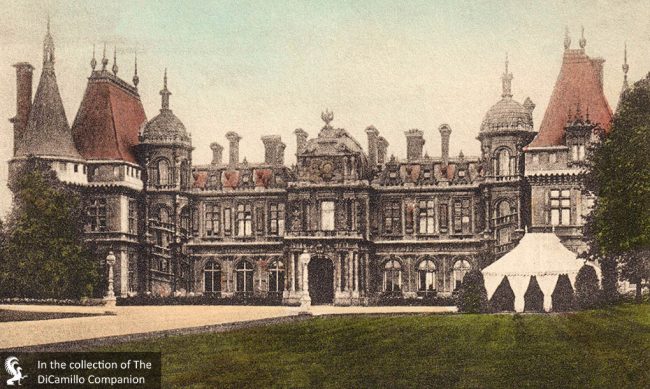
The entrance facade from a circa 1907 postcard
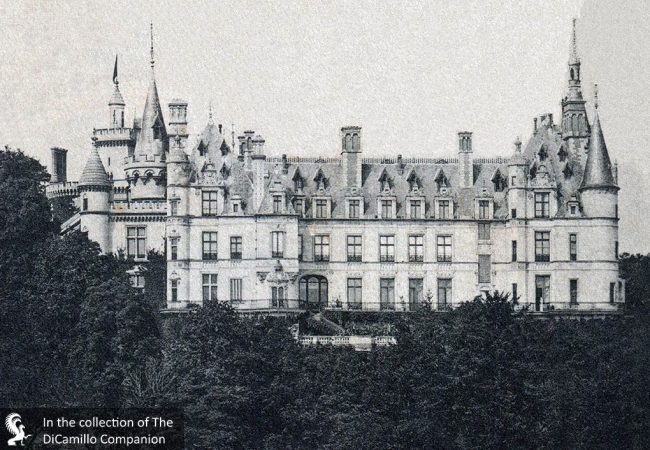
Chateau de Mouchy, Picardy, France, from a 1906 postcard. Ferdinand's French architect, Gabriel-Hyppolite Destailleur, had recently worked on this famous chateau and very likely was inspired by it in his designs for Waddesdon.
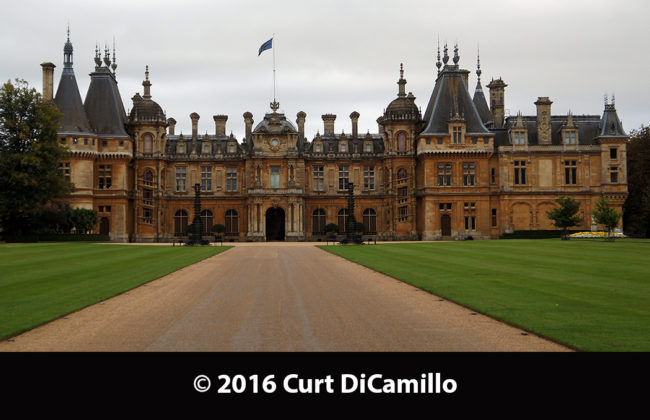
The entrance facade
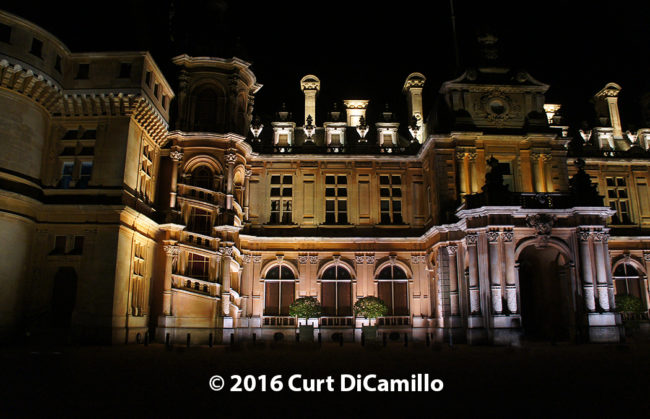
Left section of the entrance facade at night
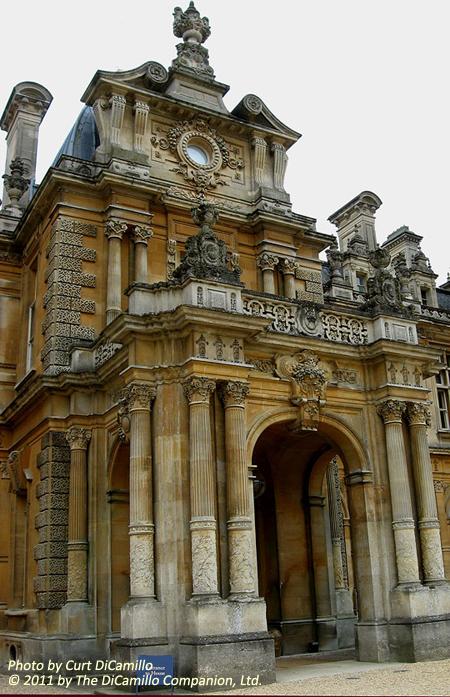
The entrance facade porte-cochère
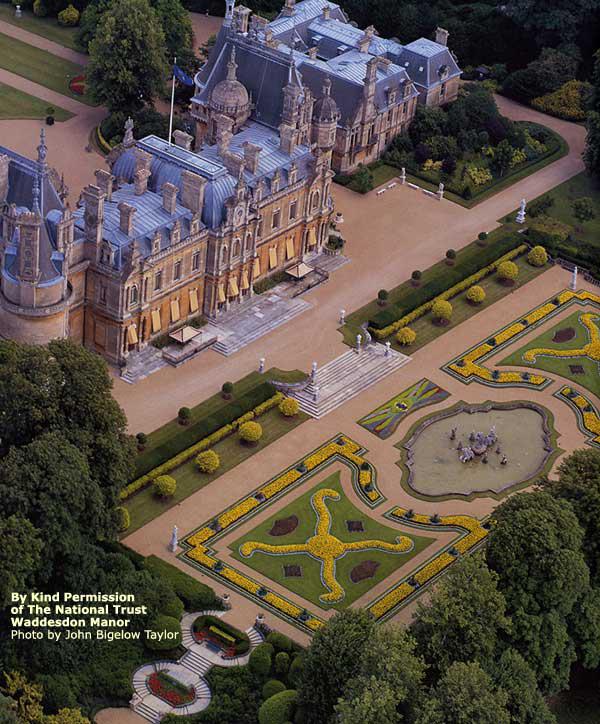
The garden facade from the air
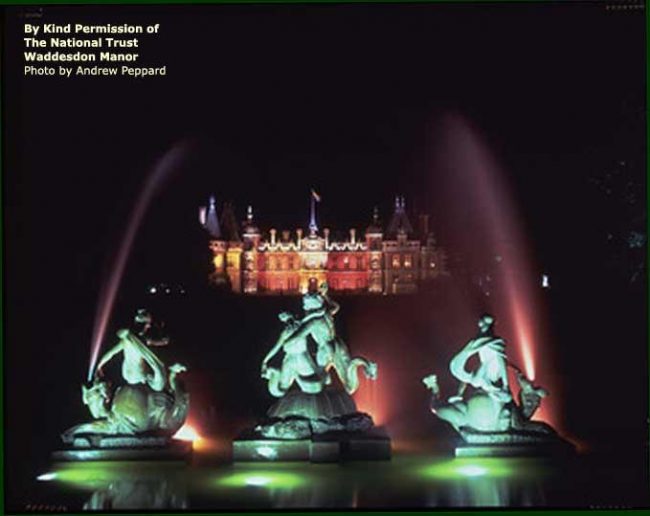
The garden facade, with fountain, at night.
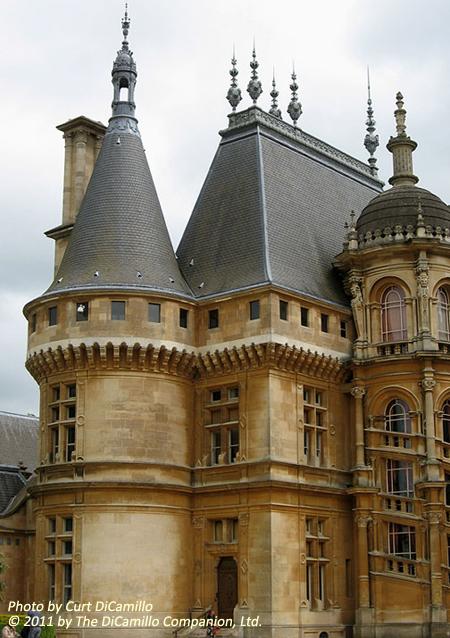
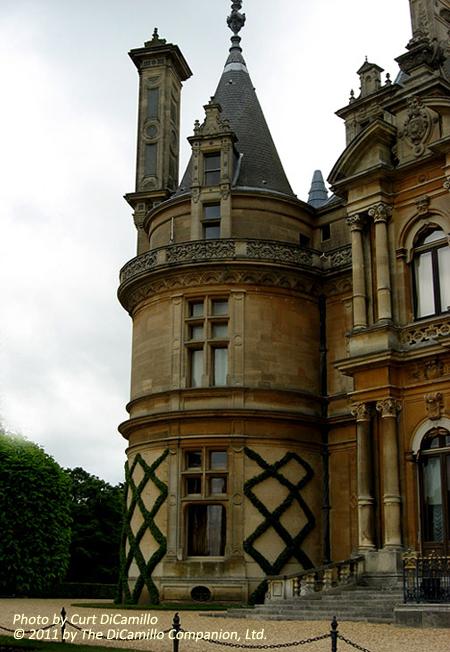
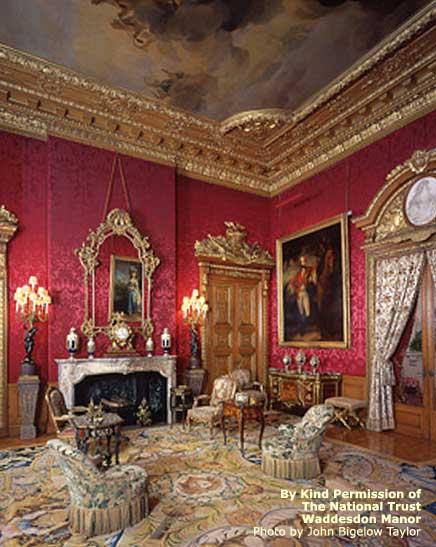
The Red Drawing Room
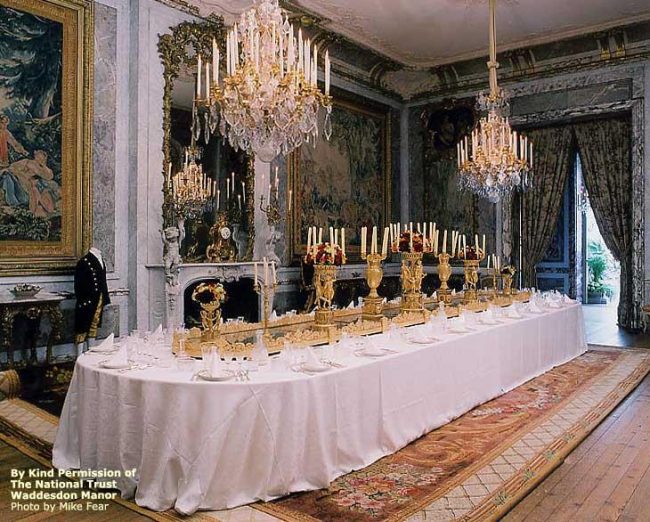
The dining room
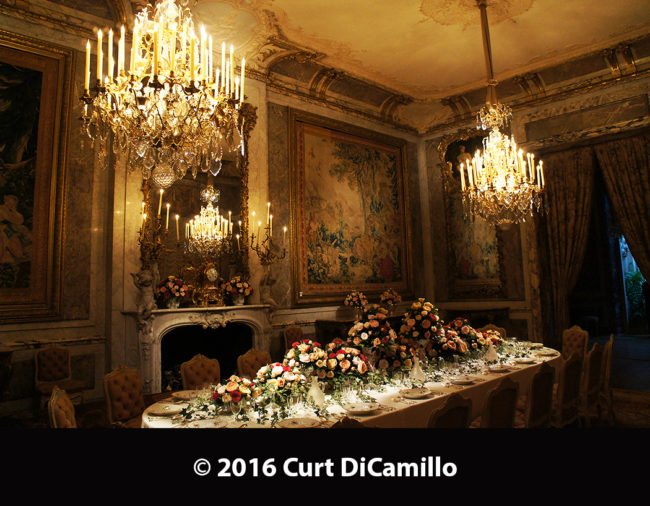
The dining room at night
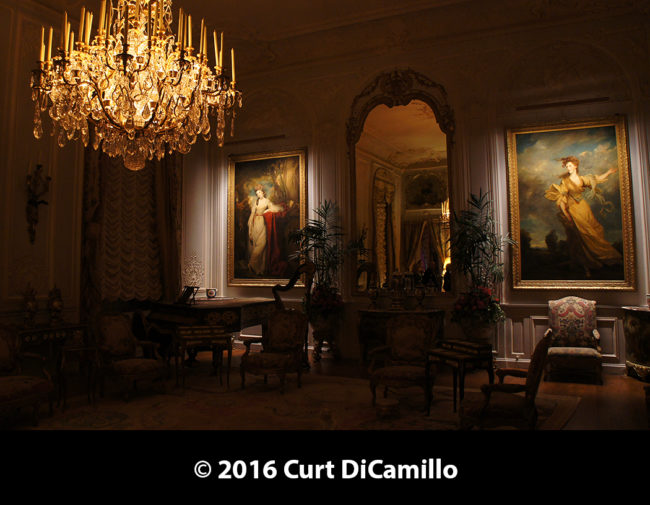
The Grey Drawing Room at night with Reynolds's portraits of Mrs. Abingtonz as a comic muse, 1764-72, and Lady Jane Tollemache, 1778-79.
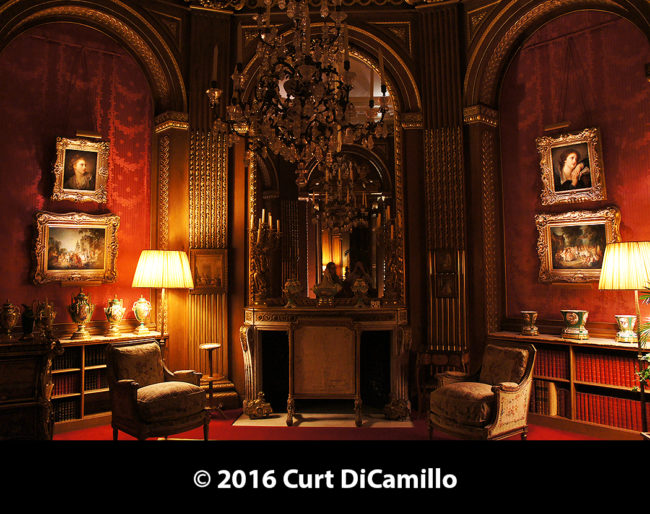
The Tower Drawing Room at night
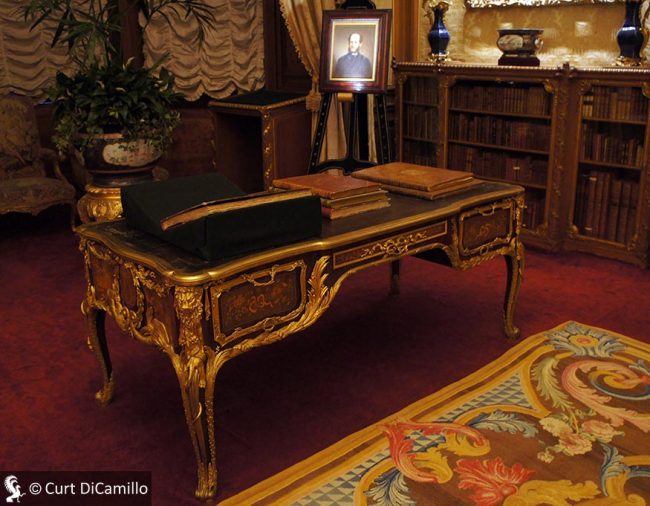
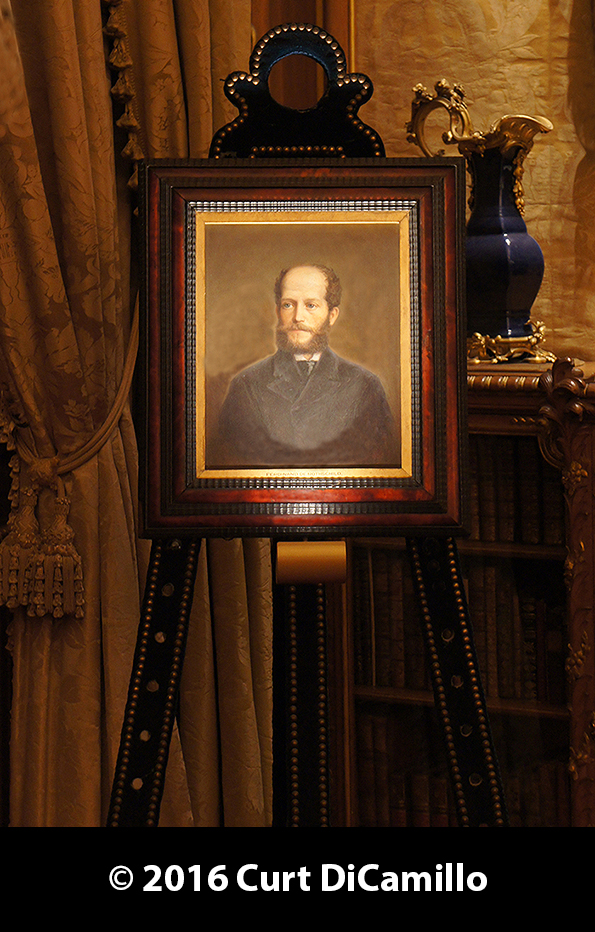
Portrait of Baron Ferdinand de Rothschild, the builder of Waddesdon.
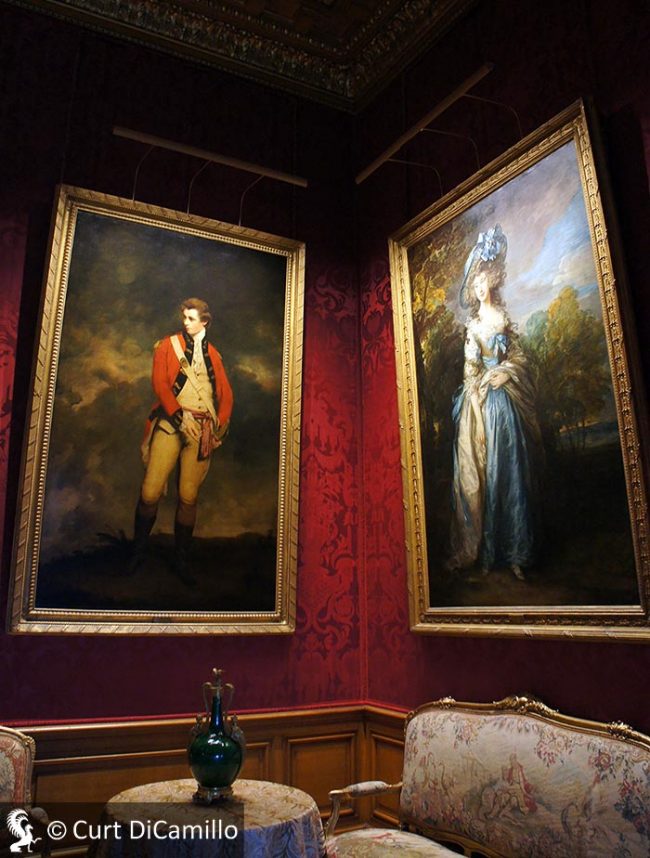
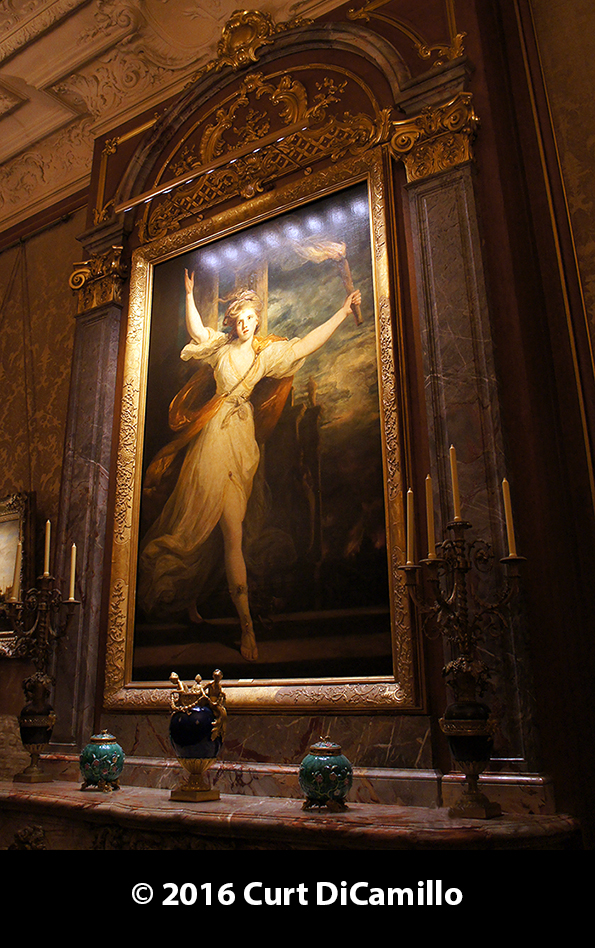
Reynold's 1781 portrait of Emily Warren as Thaïs in the Morning Room
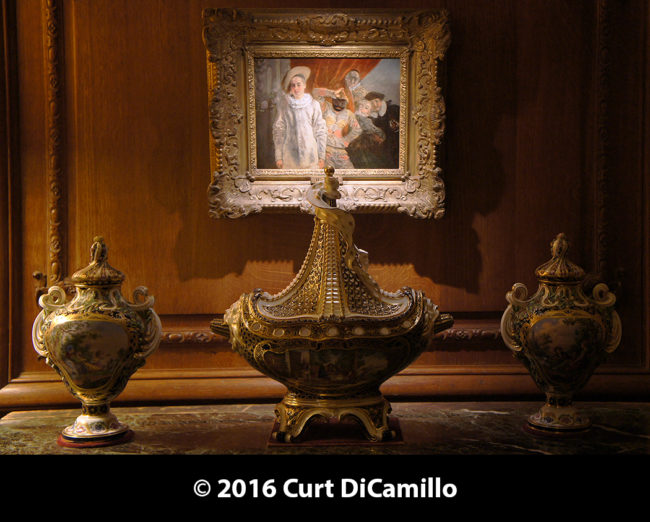
One of the three Sèvres ship potpourri vases in the collection at Waddesdon
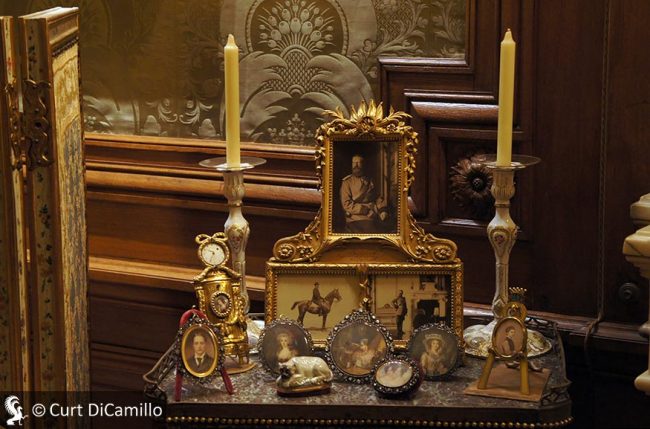
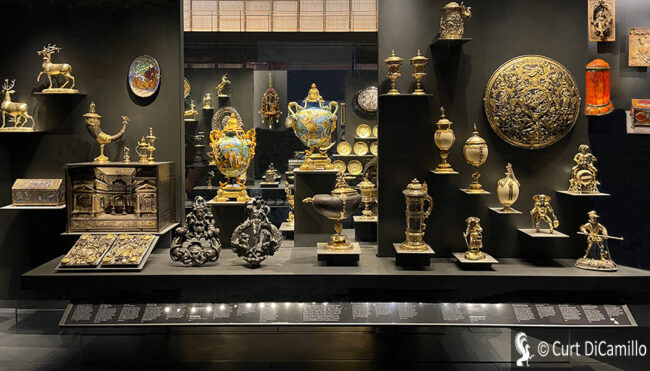
A collage view of some of the Waddesdon Bequest in the British Museum, 2022.
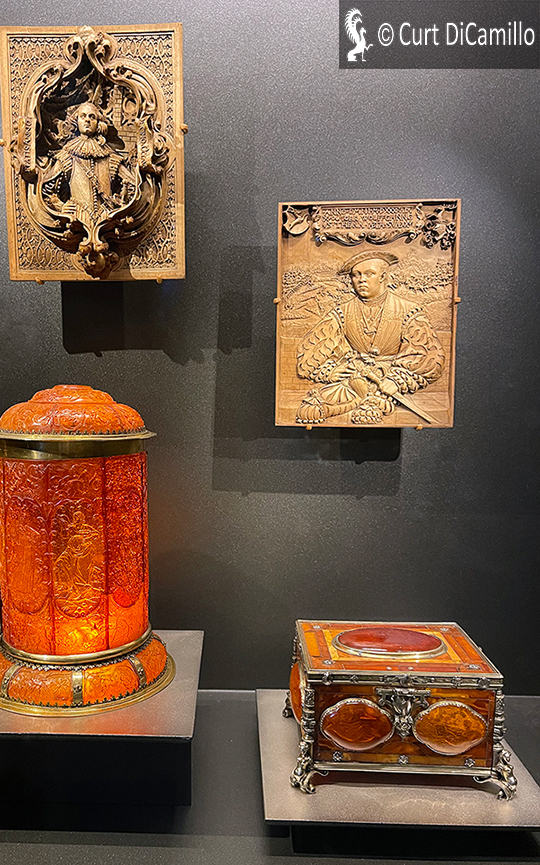
Some of the Waddesdon Bequest at the British Museum
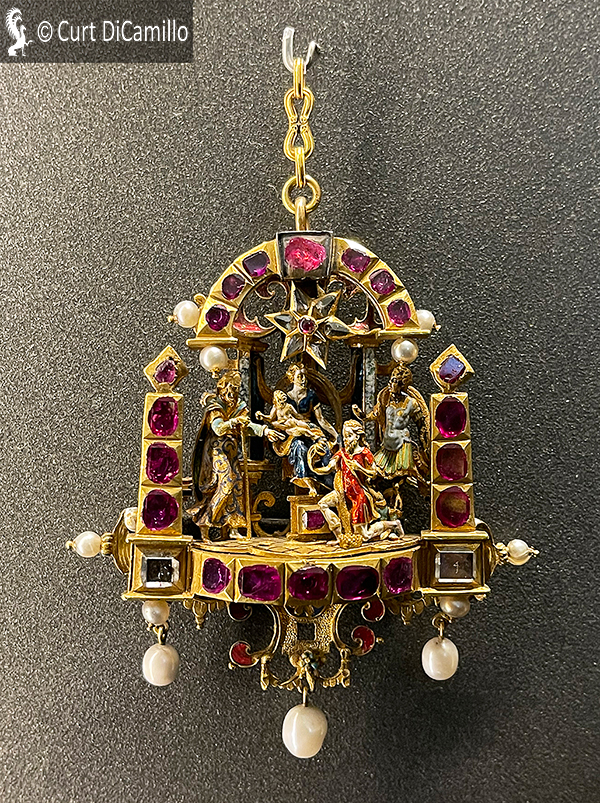
"The Adoration of the Magi," German, circa 1600, today part of the Waddesdon Bequest in the collection of the British Museum.
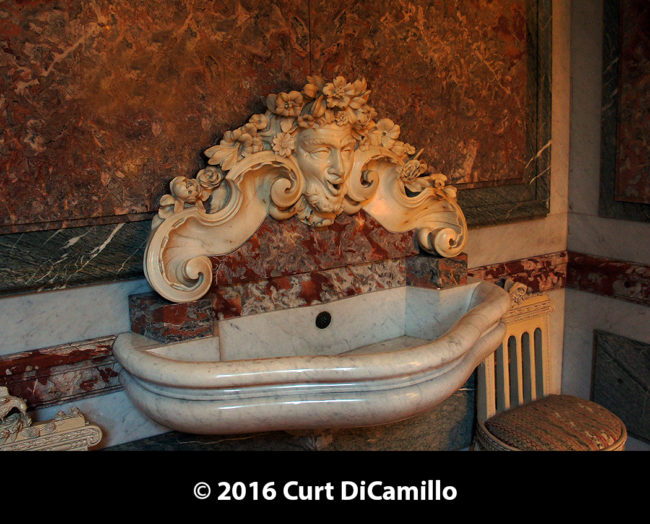
Interior marble fountain
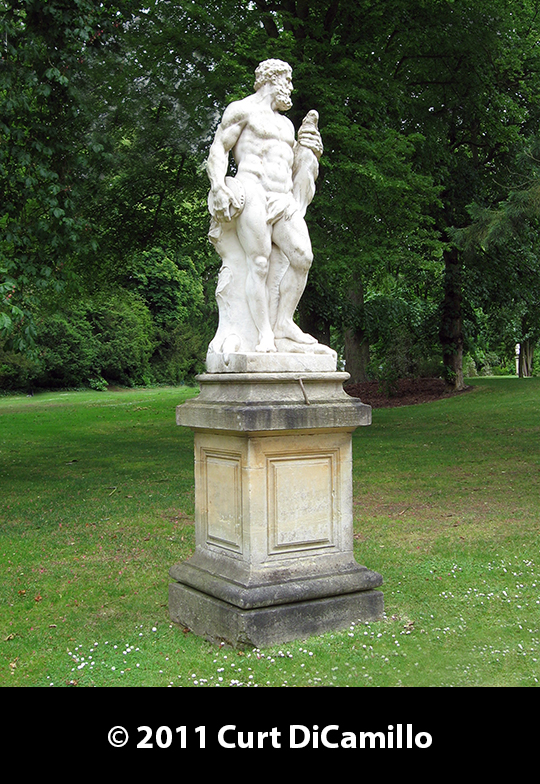
Statue in garden
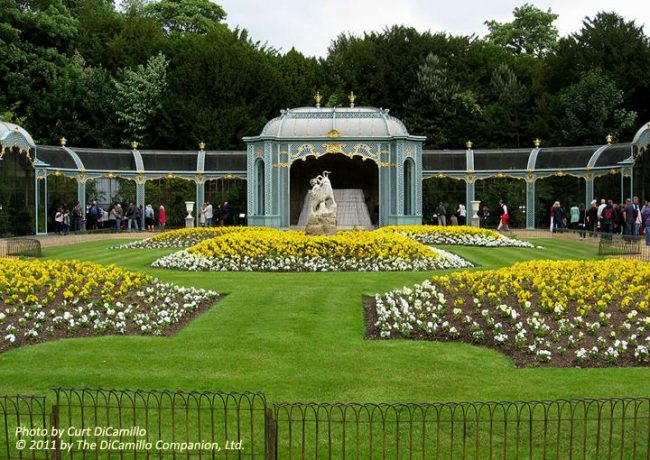
The aviary
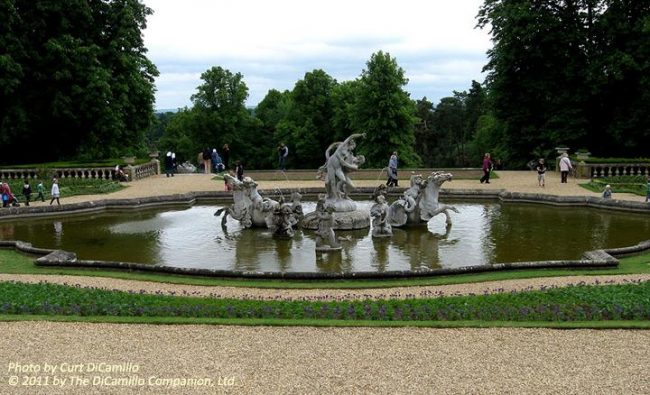
The fountain
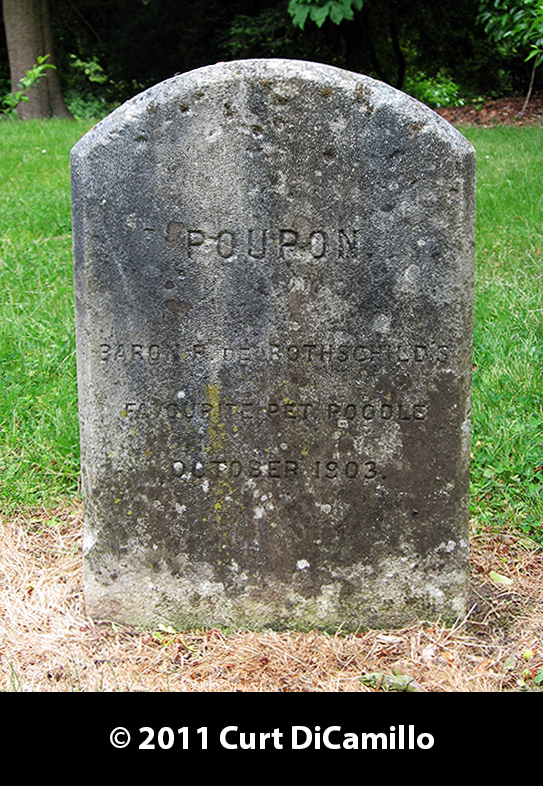
Grave in the garden of Poupon, Baron Ferdinand's standard poodle.
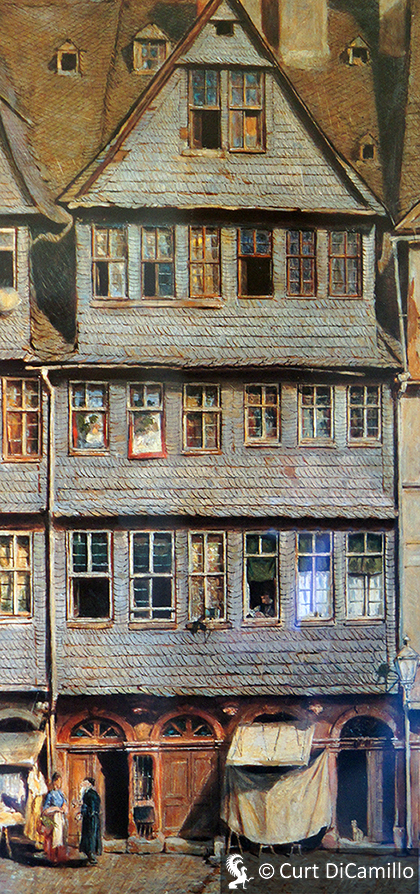
The house of Amschel Moses Rothschild (demolished), founder of the banking dynasty, in the Jewish ghetto of Frankfurt.
Built / Designed For: Ferdinand de Rothschild
House & Family History: Through its spectacularly successful banking operations (the Rothschild bank was the largest private bank in the world in the 19th century), including funding Wellington's army in the months leading up to the Battle of Waterloo in 1815, the Rothschild family rose from modest origins in Frankfurt to become one of the richest and most powerful European families of the 19th century. At one time there were 42 great Rothschild houses across Europe, all of them decorated in the over-the-top taste that gave birth to the term "le goût Rothschild" ("the taste of the Rothschilds"). In England the Rothschilds tended to live around the borders of Hertfordshire and Buckinghamshire, an area known unofficially as "Rothschildshire;" at one point they owned seven large country houses and 30,000 acres of land in the area. Today Waddesdon is one of the very few Rothschild houses in the world that retains most of its original collections and character and truly deserves the moniker le goût Rothschild. Waddesdon's creator, Baron Ferdinand de Rothschild (1839-98), was born in Paris and raised in Frankfurt and Vienna; he was the grandson of the founder of the Austrian branch of the Rothschild banking empire. In 1859, at the age of 21, he settled in England and, in 1865, married his English cousin, Evelina, the youngest daughter of Baron Lionel de Rothschild. Baron Lionel, who lived at nearby Tring Park, was the first Jew allowed to legally take his seat the House of Commons, after Parliament changed the law that required members to take a Christian oath. Ferdinand and Evelina furnished a lavish London house in Piccadilly while they considered building a country house. Evelina died in childbirth in 1866; Ferdinand, childless, never married again. In 1874 Ferdinand purchased the Waddesdon and Winchendon estates from the 7th Duke of Marlborough. With no house, garden, or park, Waddesdon was nothing but farmland—an estate almost barren of trees. This was remedied by the planting of hundreds of fully-grown trees, sometimes requiring 16 shire horses to haul just one tree (Ferdinand also had a special railroad built to bring the building materials to the top of the hill on which the house was built). Enchanted by the chateaux of the Valois kings of France, Ferdinand looked for an architect familiar with that style; he found his man in Gabriel-Hyppolite Destailleur, a French architect who had recently adapted the Château de Mouchy (see "Images" section), near Beauvais in Picardy, the ancestral seat of the dukes de Mouchy. The Waddesdon foundation stone was laid on August 18, 1877; the house, built of warm Bath stone, is in the 16th French Renaissance style of the Loire Valley (though located just outside of Paris, Ferdinand admitted that the towers of Waddesdon were borrowed from Château de Maintenon). During the next four years a massive building project took place: the laying of 11 miles of pipes for water, building a gas works, demolishing 150 existing cottages and a flour mill, leveling the top of Lodge Hill to create the North Avenue, and the digging of foundations to a depth of 30 feet through clay to reach solid ground. The house, internally and externally, is irregular, giving a sense of development over a long period, but it was all built of a piece, with the main part completed by 1883. Unusual for the time, central heating was installed from the start and electricity was in place by 1889. The interiors were extravagantly done up in the French 18th century taste, with many rooms fitted out in historic paneling (boiseries). The majority of the paneling came from historic Paris houses that were demolished in 1860s by Baron Haussmann as part of his rebuilding of the city during the reign of Napoleon III. The Billiard Room came from a chateau of the Montmorencies, while the boiserie of the Grey Drawing Room was extracted from the convent of the Sacré-Coeur, formerly the hotel of the Duc de Lauzun (the paneling was sold to Ferdinand, his brother Albert in Vienna, and their cousin Edmond by the nuns of the Convent of the Sacré-Coeur). The Tower Drawing Room paneling came from a villa which was once the residence of the famous Fermier-General Beaujon, who also owned the Élysée Palace. The Louis XV paneling (circa 1750) in the Green Boudoir is one of three sets of paneling at Waddesdon that came from the Hôtel Dodun, the Paris house of the Maréchal-duc de Richelieu (the maréchal, whose house was at 27 rue de Richelieu, was a great nephew of the famous cardinal). The second set, circa 1780, is in the Low White Room and is in the Louis XVI style. The third room is the Breakfast Room, which has panels carved with medallions of cupids representing the seasons of the year. (The dining room walls at nearby Mentmore Towers, built by Ferdinand's cousin, Baron Mayer de Rothschild, were covered with boiseries taken from the Hôtel de Villars in Paris, the first example of this type of decoration to be used in an English house. The fragments of the boiseries not used at Mentmore were later installed at Waddesdon). Destailleur brilliantly combined antique architectural elements and painting with new plasterwork ceilings, doorcases, and windows to create a series of convincingly authentic and luxurious interiors on a grand scale. The contents are exceptional; in the 1870s and 1880s Ferdinand was able to acquire superb works of art from aristocratic British families facing tough financial times: objects from the collections of the dukes of Hamilton, Buccleuch, Devonshire and the earls Spencer and Fitzwilliam all came to Waddesdon, in addition to collections purchased abroad. There are magnificent paintings, furniture, ceramics, gold boxes, tapestries, and carpets from the French royal collections. In addition, there are exceptional portraits by Gainsborough and Reynolds; medieval illuminations, 17th and 18th century books with magnificent bindings; a collection of approximately 2,000 French 18th century drawings and designs, formed by Edmond de Rothschild in Paris; and the great silver dinner service by Robert-Joseph Auguste (1723-1805), made in the 1770s for George III for use in Hanover (purchased by Jacob, 4th Lord Rothschild, in 2002). During its golden age in the late 19th century Waddesdon was a center of glittering social gatherings. Queen Victoria came to visit on May 14, 1890 and Kings Edward VII and George V were both frequent guests, as well as more ordinary mortals, such as Henry James, British prime ministers, and the shah of Persia. Baron Ferdinand left Waddesdon to his sister Alice (1847-1922) on his death in 1898. Miss Alice (as she was known) had been Ferdinand's companion and hostess for many years; she was noted for her kindness and generosity, especially to the staff at Waddesdon. During her decades of ownership Miss Alice added to the collection (primarily arms and armor), protected the fragile contents of the house, and ruled over the 100 gardeners who took care of the immaculate lawns, flowerbeds, and greenhouses. At Miss Alice's death in 1922 she left Waddesdon to her great nephew, James de Rothschild (1878-1957). James, who was a member of the French branch of the family, became a British subject in 1919. In 1939, and for the duration of World War II, the house became a residential nursery for 100 London children under the age of five. In addition, James was one of the leaders in Britain of the Kindertransport, a program that brought over 10,000 Jewish children from Germany and German-controlled countries to Britain in the years leading up to World War II to protect them from Nazi persecution (the story of the Cedar Boys, German Jewish refugees from Frankfurt who spent the war at Waddesdon, was the subject of the Warner Bros. documentary film narrated by Judi Dench entitled "Into the Arms of Strangers: Stories of the Kindertransport," which won the Academy Award for best documentary in 2000). James was also a notable supporter of the arts, a trustee of The Wallace Collection, a major supporter of the state of Israel, and parliamentary secretary to the Ministry of Supply during World War II. It was James who left Waddesdon and its world-class collection, with a sizeable endowment, to the National Trust at his death in 1957. In recent years the 4th Lord Rothschild's patronage has ensured that major renovations have been carried out (1990-94), rooms refurbished, and new displays, with a strong family character, added. The gardens have been restored to the Victorian designs of Elie Lainé, while Waddesdon's curators have pursued an active program of scholarly research and publication. Waddesdon has some of the highest visitor numbers among National Trust properties; in 2019 it was visited by over 460,000 people. In the summer of 2012 a set of installations by contemporary British ceramicist Edmund de Waal went on view at Waddesdon. De Waal is famous as the author of the 2010 book "The Hare with Amber Eyes," which traces the ups and downs of the artist's European Jewish family, who were once as wealthy as the Rothschilds. A curator at Waddesdon read de Waal's book and realized that the artist was a distant cousin of the 4th Lord Rothschild; this discovery ultimately resulted in an invitation to de Waal to do an exhibition at Waddesdon highlighting the convergence of European history, wealthy collectors, and Jewish history. (We are grateful to Lisa White and the Attingham Summer School for contributing to this history of Waddesdon.)
Collections: Waddesdon houses an extraordinary assemblage of French 18th century decorative arts, formed primarily in the 19th century by Ferdinand de Rothschild. The furniture, Savonnerie carpets, and Sèvres porcelain rank in importance with the Metropolitan Museum and the Louvre. There are two extraordinary pieces of French furniture made by Jean-Henri Riesener at Waddesdon: a writing desk made in 1782 for Marie-Antoinette's use at the Petit Trianon that bears the stamped mark of the queen's furniture inventory (the matching chest of drawers and drop-front secrétaire are in the Frick Collection, New York), and a massive cylinder-top desk of 1781 that Ferdinand purchased from the 6th Duke of Buccleuch. The wall-lights in the Baron's Room at Waddesdon were made for Marie-Antoinette's apartments at the Chateau de Compiègne in 1787. Ferdinand's collection of Sèvres at Waddesdon is outstanding, the highlight of which must be the three potpourri vases of 1761 in the shape of ships (only 12 were made, of which only 10 are known to exist). The collections of Chinese vases, Dutch paintings, and Meissen porcelain are exceptional. These are complemented by two huge canvases of Venice by Francesco Guardi and an extraordinary collection of English portraits by Romney, Gainsborough (his famous "Pink Boy" is one of the standouts of the Waddesdon collection), Lawrence, and Reynolds (Reynolds's "David Garrick Between Comedy and Tragedy" and his painting of the Athenian courtesan Thais are especially fine). There are two iconic portraits by Francois Boucher in the collection at Waddesdon: Madame de Pompadour of circa 1755 and Duc d'Orléans (later Philippe Égalité) of 1749. In 2006 the 4th Lord Rothschild purchased a full-length 1783 state portrait of Louis XVI by Antoine-Francois Callet (in its original frame by Francois-Charles Buteux) and placed it on long-term loan at Waddesdon. The portrait of Louis was purchased circa 1803 by the famous "Kitty" Courtenay, 9th Earl of Devon, for Powderham Castle, where it hung until its 2006 sale. In 2002 the 4th Lord Rothschild acquired a large part of a silver service commissioned from the French silversmith Robert-Joseph Auguste (1723-1805) in the 1770s by George III for use in Hanover (in addition to being kings of Great Britain and Ireland, the Hanoverians were also electors and kings of Hanover). Lord Rothschild placed the silver service on loan to Waddesdon (much of the art at Waddesdon is owned by Rothschild family trusts and is on long-term loan to the National Trust). Ferdinand de Rothschild was not noted as a collector of Neoclassical objects; however, he did acquire a set of four silver Neoclassical wine colors made in 1809 by Robert and Samuel Hennell and based on a design by Robert-Joseph Auguste. The wine coolers were sold from Waddesdon in the 1970s and were re-acquired in the early 21st century for the house. In 1913 James de Rothschild commissioned the Russian artist Leon Bakst to do a series of seven paintings depicting the story of "The Sleeping Beauty." The paintings were intended for the drawing room of James's London townhouse at 34 Park Street; they are today at Waddesdon. James inherited a portion of the collection formed by his father, Baron Edmond de Rothschild. Major pieces, including Gainsborough's "Pink Boy," came to Waddesdon as a result of this inheritance. Edmond de Rothschild is considered by many scholars to have been the greatest of all Rothschild collectors. His passion was prints (he owned over 40,000 of them), in addition to a very important collection of drawings. Edmond was also a noted bibliophile; he put together a major collection of Medieval manuscripts. In addition, he was an amateur archaeologist with a passionate interest in classical antiquity; he owned the 1st century AD Boscoreale Treasure, a major group of Roman silver today in the collection of the Louvre. Edmond and Ferdinand both purchased items from the famous Hamilton Palace sale of 1882; many of the objects acquired by both Rothschilds at this sale are today at Waddesdon. More than 100 antique gold boxes, and other art worth millions of pounds, were stolen from Waddesdon at 2:00 AM on June 20, 2003 by a masked gang that smashed into the house and made off with the treasure in less than four minutes (before the theft Waddesdon contained the world's greatest collection of gold boxes, formed over more than a century by Ferdinand de Rothschild, his sister Alice, and the 4th Lord Rothschild). This was the second time that gold boxes from Waddesdon have been stolen; in 1983 thieves took a number of pieces, which, with one exception, were recovered 18 months later. Michael Hall, writing in the Jul/Aug 2007 issue of "Apollo" magazine, stated that the program of scholarly publications documenting the collections at Waddesdon is so outstanding that "no historic house in the world can match [it]." In 2001 a woodland path to the parterre was laid out as the Baron's Walk; this path features two sandstone statues carved in the 1730s by Jan van Logteren: Venus and Adonis. The statues were formerly in the garden of Aston Clinton (another Rothschild house in Buckinghamshire that was demolished in 1958). The Lyte Jewel, an early 17th century miniature portrait of James I by Nicholas Hilliard surrounded by diamonds, enamel, and gold and a circa 400 AD Roman carved agate vase, are among the almost 300 objects bequeathed to the British Museum in 1898 by Baron Ferdinand Rothschild. Known as the Waddesdon Bequest (see “Images” section), the collection consists primarily of exceptionally important Medieval and Renaissance pieces.
Garden & Outbuildings: Waddesdon boasts one of the finest Victorian gardens in Britain, renowned for its seasonal displays, colorful shrubs, giant tree ferns, its rose garden, the children's garden, and the Rococo style aviary, home to a splendid collection of exotic birds. In 2001 a woodland path to the parterre was laid out as the Baron's Walk; this path features two sandstone statues carved in the 1730s by Jan van Logteren: Venus and Adonis. The statues were formerly in the garden of Aston Clinton (another Rothschild house in Buckinghamshire that was demolished in 1958). The larger Waddesdon Estate (the land outside the house and garden) today stands at 6,000 acres and remains privately owned by the Rothschild family. The majority of the estate is farmed in-hand (3,200 acres), while five tenant farmers farm most of the remainder of the land.
Country Life: XII, 808, 1902. CXXI, 1277 [Treasures], 1957. CXXVI, 66, 1959. CXLVII, 1154 [Store Rooms], 1970.
Title: Apollo (magazine)
Author: NA
Year Published: NA
Reference: Jul/Aug 2007, pgs. 44, 46, 47, 48, 49
Publisher: London: Apollo Magazine Ltd.
ISBN: NA
Book Type: Magazine
Title: Landmarks of Britain: The Five Hundred Places that Made Our History
Author: Aslet, Clive
Year Published: 2005
Reference: pg. 246
Publisher: London: Hodder & Stoughton
ISBN: 0340735104
Book Type: Hardback
Title: Great Houses of England & Wales
Author: Montgomery-Massingberd, Hugh and Sykes, Christopher Simon
Year Published: 1994
Reference: pgs. 409, 410, 412, 415, 416
Publisher: New York: Rizzoli International Publications, Inc.
ISBN: 0847818241
Book Type: Hardback
Title: Waddesdon Manor: The Heritage of a Rothschild House
Author: Hall, Michael (Text); Taylor, John Bigelow (Photographs)
Year Published: 2002
Reference: pgs. 16, 19, 84, 86, 212, 216, 246
Publisher: New York: Harry N. Abrams, Inc.
ISBN: 0810932393
Book Type: Hardback
Title: Waddesdon Companion Guide, The
Author: Schwartz, Selma (Editor)
Year Published: 2003
Reference: pgs. 44, 56
Publisher: Buckinghamshire: Waddesdon Manor/The National Trust
ISBN: NA
Book Type: Softback
Title: Sotheby's Auction Catalog: Mentmore: Volume Four: Paintings, Prints and Drawings
Author: NA
Year Published: 1977
Reference: pg. viii
Publisher: London: Sotheby Parke Bernet & Co.
ISBN: NA
Book Type: Hardback
Title: Movie Locations: A Guide to Britain & Ireland
Author: Adams, Mark
Year Published: 2000
Publisher: London: Boxtree
ISBN: 0752271695
Book Type: Softback
House Listed: Grade I
Park Listed: Grade I
Past Seat / Home of: Baron Ferdinand de Rothschild, 1885-98; Alice Charlotte de Rothschild, 1898-1922; James Armand Edmond de Rothschild, 1922-57; Dorothy Mathilde de Rothschild, 1957-88.
Current Ownership Type: The National Trust
Primary Current Ownership Use: Visitor Attraction
House Open to Public: Yes
Phone: 01296-653-203
Fax: 01296-653-237
Email: [email protected]
Website: https://waddesdon.org.uk/
Awards: Museum of the Year. Best National Trust Property 1997. Silver Award for England for Excellence 1998.
Historic Houses Member: Yes